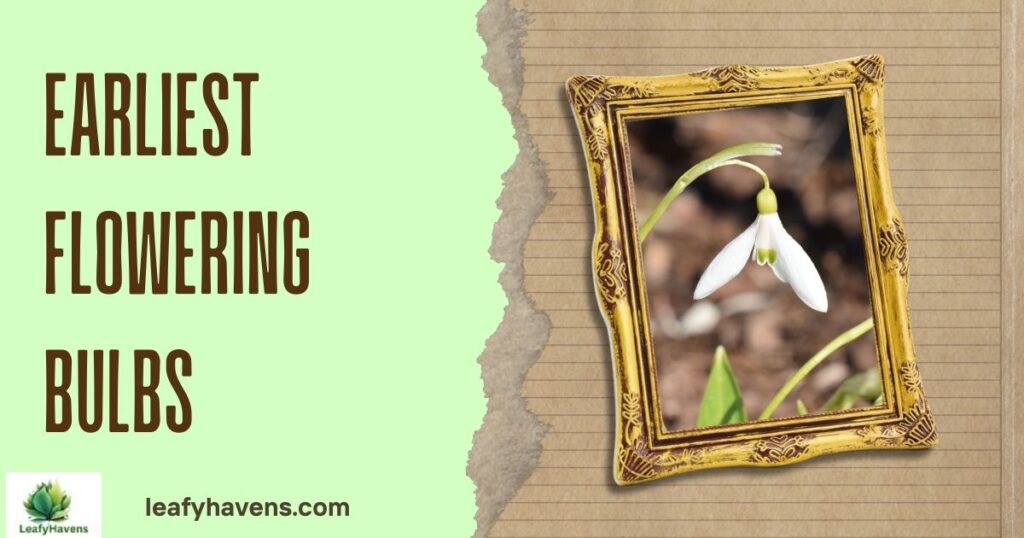It’s not necessary for winter to remain dreary and lifeless. Even in cold and icy weather, you may add bright colors to your garden with the earliest flowering bulbs. These winter flowering bulbs are ideal for gardeners of all skill levels because they are not only hardy but also very simple to grow. Let’s examine the benefits of cold-weather bulbs and how they might change your garden.
- What Are the Earliest Flowering Bulbs?
- Why Choose the Earliest Flowering Bulbs?
- How to Plant the Earliest Flowering Bulbs
- Top 5 Earliest Flowering Bulbs for Your Garden
- Detailed Overview of Each Bulb
- When to Plant Winter Flowering Bulbs
- Caring for Cold-Hardy Flower Bulbs After Blooming
- Why You Should Add These Bulbs to Your Garden
- FAQs About the Earliest Flowering Bulbs
You may want to read; What Flowers Bloom in the Winter?
What Are the Earliest Flowering Bulbs?
The earliest flowering bulbs are specially designed by nature to bloom when most plants are still dormant. These hardy bulbs don’t wait for the warmth of spring. Instead, they brave the cold to provide beauty, color, and even fragrance during the frostiest months.
Examples of popular cold-hardy flower bulbs include:
- Snowdrops
- Crocuses
- Winter Aconites
- Daffodils (early varieties)
- Tulips (early blooming species)
Why Choose the Earliest Flowering Bulbs?
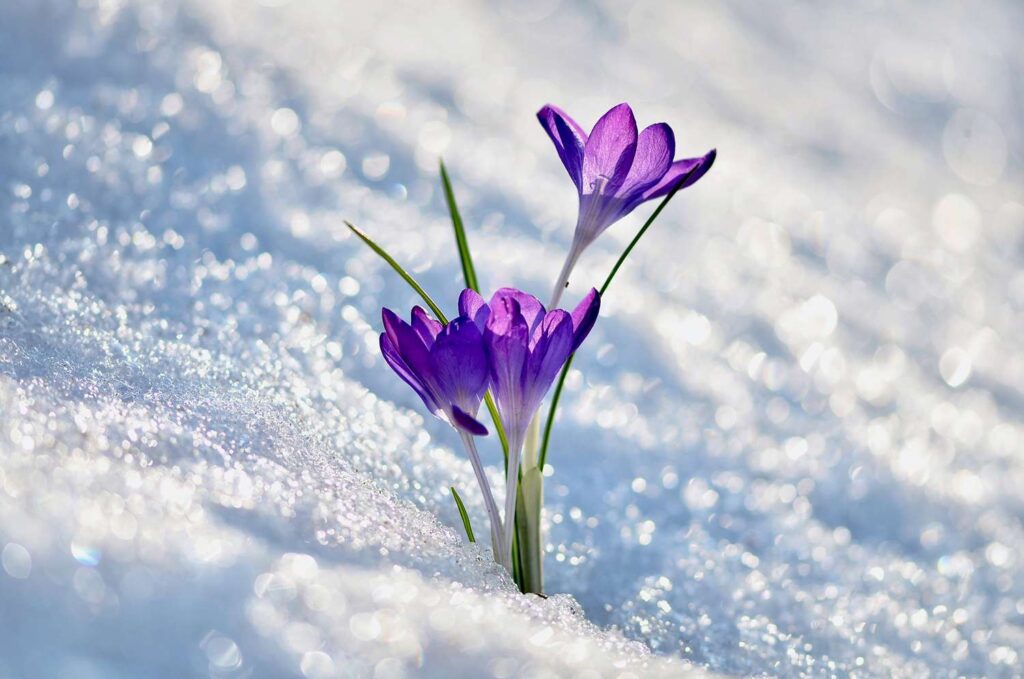
Planting earliest flowering bulbs offers numerous benefits:
- Year-Round Beauty: Brighten up your garden when other plants are resting.
- Low Maintenance: These bulbs are hardy and require minimal care.
- Seasonal Appeal: They bring a cheerful vibe to an otherwise gloomy season.
- Pollinator Friendly: Early bloomers provide much-needed nectar for pollinators like bees.
How to Plant the Earliest Flowering Bulbs
Here’s a step-by-step guide to help you plant winter flowering bulbs effectively:
1. Choose the Right Bulbs
Select bulbs that are known for their early blooming and cold tolerance. Some popular options include:
- Snowdrops: Tiny white flowers that bloom even through snow.
- Crocuses: Vibrant purples, yellows, and whites to add a splash of color.
- Winter Aconites: Golden yellow flowers perfect for ground cover.
2. Find the Perfect Spot
Look for a location with well-draining soil and plenty of sunlight. Bulbs that bloom in cold weather thrive in bright spots where they can absorb as much light as possible.
3. Prepare the Soil
- Dig the soil and loosen it to ensure proper drainage.
- Add compost or organic matter for better nutrition.
4. Planting Depth
- Check the packaging for specific planting depths (usually 2-3 times the bulb’s height).
- Place the bulb with its pointed end facing upward.
5. Watering and Care
- Water the bulbs immediately after planting.
- Avoid overwatering during winter, as excess moisture can cause rot.
6. Add Mulch
Apply a thin layer of mulch to protect the bulbs from extreme cold and retain moisture.
Top 5 Earliest Flowering Bulbs for Your Garden
These earliest flowering bulbs will bring life and color to your garden, even in the coldest months. Below is a detailed guide to the top five options, including their characteristics, bloom times, and ideal planting conditions.
| Bulb Name | Description | Bloom Time | Ideal Planting Time | Planting Depth | Special Features |
| Snowdrops | Delicate white flowers that often bloom through snow, symbolizing hope. | Late Winter | Fall | 2-3 times the bulb’s height | Hardy and deer-resistant, thrive in woodland gardens and rockeries. |
| Crocuses | Vibrant flowers in shades of purple, yellow, and white that bring early color. | Late Winter | Fall | 2-3 times the bulb’s height | Ideal for borders, lawns, and pots; excellent for pollinators. |
| Winter Aconites | Bright yellow, buttercup-like flowers that form a cheerful ground cover. | Late Winter | Fall | 2-3 inches deep | Best planted in clusters; spreads naturally over time. |
| Early Daffodils | Varieties like “February Gold” produce cheerful yellow blooms before spring. | Late Winter | Fall | 3-6 inches deep | Long-lasting blooms; naturalizes well in gardens and meadows. |
| Early Tulips | Species tulips such as Kaufmanniana bring bold, colorful flowers early in the season. | Early Spring | Fall | 4-6 inches deep | Compact and elegant; suitable for borders, containers, and cutting gardens. |
Detailed Overview of Each Bulb
1. Snowdrops
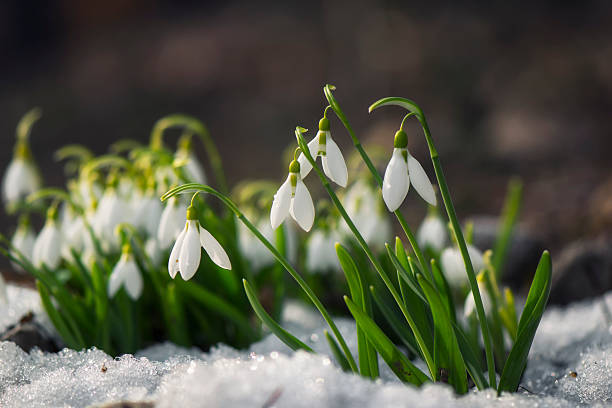
Snowdrops are among the first flowers to bloom, often peeking through the snow. These small, white, bell-shaped flowers thrive in partial shade and well-drained soil. They’re perfect for woodland gardens or naturalized areas.
- Care Tip: Keep the soil moist but not waterlogged.
2. Crocuses
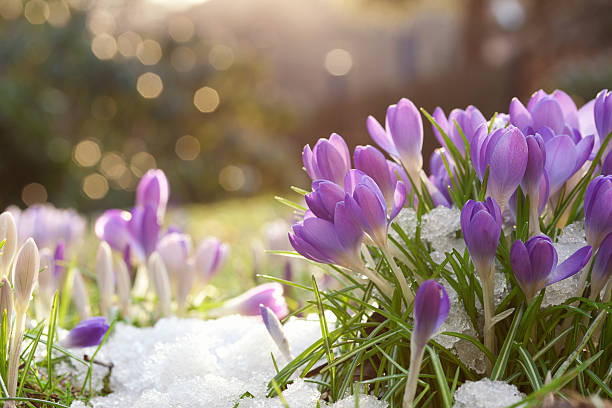
Crocuses add a vibrant splash of color to winter gardens. These hardy flowers grow well in full sun to partial shade and prefer loamy, well-draining soil.
- Care Tip: Plant crocuses in groups for a more dramatic visual effect.
3. Winter Aconites
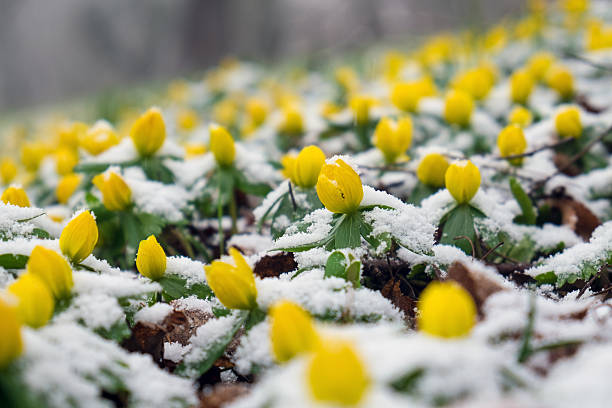
Winter Aconites create a golden carpet of flowers during the coldest months. They are great for covering bare ground and thrive in sunny to partially shaded areas with rich, well-drained soil.
- Care Tip: Water sparingly after planting, as they dislike overly wet conditions.
4. Early Daffodils
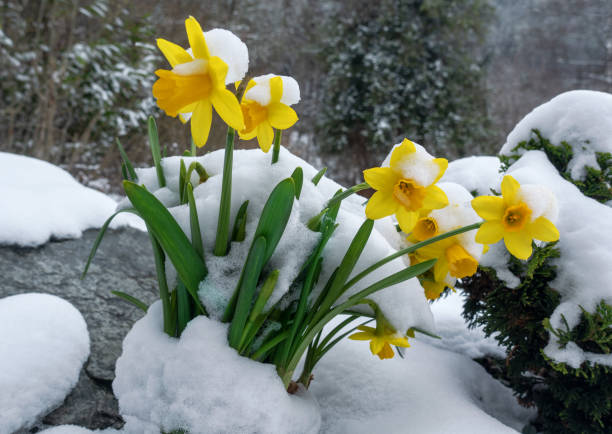
Early varieties of daffodils, like “February Gold,” are reliable bloomers that provide a bright, sunny look to gardens. They thrive in full sun to partial shade and adapt well to different soil types.
- Care Tip: Deadhead spent flowers to encourage energy storage for the next bloom cycle.
5. Early Tulips
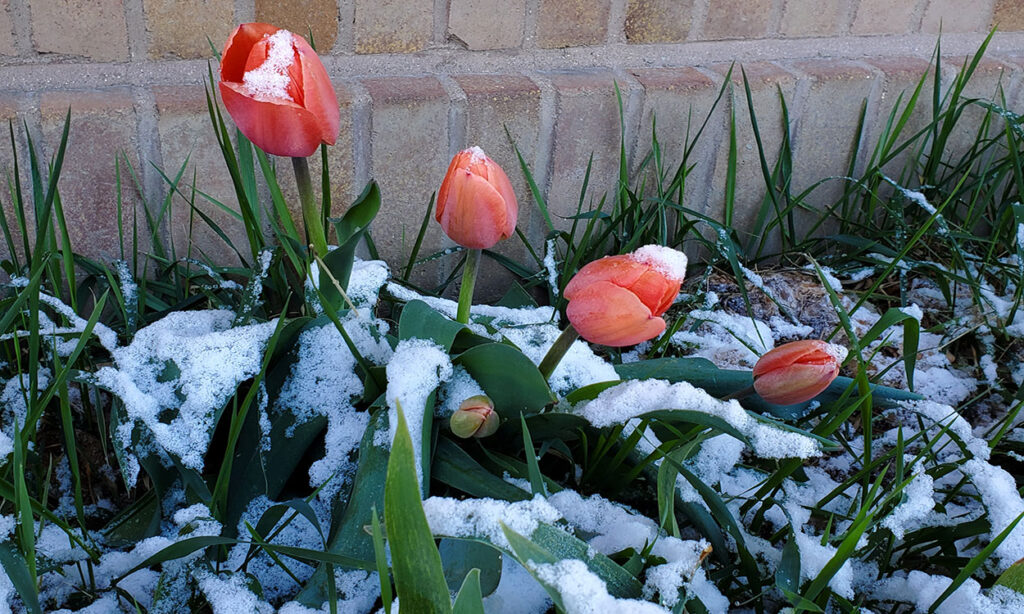
Species tulips, like Kaufmanniana, bring elegance and vibrant color to your garden. These compact tulips prefer full sun and well-drained soil.
- Care Tip: Apply a thin layer of mulch to protect them from extreme cold.
When to Plant Winter Flowering Bulbs
The best time to plant earliest flowering bulbs is during fall, before the ground freezes. Ideally, aim for late September to early November. This timing allows the bulbs to establish roots before winter sets in.
Caring for Cold-Hardy Flower Bulbs After Blooming
Once your cold-hardy flower bulbs have bloomed, you can keep them thriving with these tips:
- Deadheading: Remove spent flowers to prevent energy from going into seed production.
- Leave the Foliage: Allow the leaves to die back naturally. This helps the bulb store energy for the next season.
- Fertilize: Apply a balanced fertilizer after blooming to strengthen the bulbs.
Why You Should Add These Bulbs to Your Garden
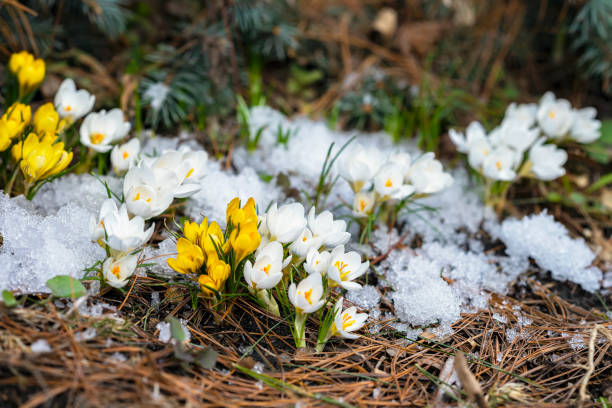
The earliest flowering bulbs are a must-have for anyone looking to bring joy and color to their garden during the coldest months. Not only do they brighten your outdoor space, but they also serve as a gentle reminder that spring is just around the corner. Whether you’re a seasoned gardener or a beginner, these bulbs are easy to grow, rewarding, and absolutely worth the investment.
Make your winter garden a haven of beauty with bulbs that bloom in cold weather!
FAQs About the Earliest Flowering Bulbs
- What are the best earliest flowering bulbs for beginners?
Snowdrops, crocuses, and winter aconites are excellent options for new gardeners. - Can I plant winter flowering bulbs in pots?
Yes, many bulbs that bloom in cold weather thrive in pots if the soil is well-drained. - How long do the blooms of early flowering bulbs last?
The blooms typically last 2-4 weeks, depending on the weather and bulb type. - Are cold-hardy flower bulbs deer-resistant?
Some bulbs, like daffodils, are deer-resistant, making them a great choice for wildlife-prone areas. - Do I need to dig up the bulbs after winter?
Most cold-hardy flower bulbs are perennial and can stay in the ground year-round.

